
There are four species of horseshoe crabs, and
all are members of the class Merostomata,
aquatic animals with two body segments and a
spikelike telson at the tail end. Perhaps the bestknown
representative is Limulus polyphemus, the
common horseshoe crab native to the northwest
Atlantic coast and the Gulf of Mexico. These animals
live in shallow water to depths of one hundred
feet and prefer soft sand or mud bottoms,
through which they slowly plow as they scavenge
for food.
Horseshoe crabs, unlike true crabs, do not have
antennae. However, like crabs, they do have
jointed appendages and a hard shell, or exoskeleton,
made of chitin, which must be periodically
shed to accommodate the growing body of the individual.
Horseshoe Crab Anatomy
The body of horseshoe crabs is divided into two
segments: a large, helmet-shaped, forward section
called the cephalothorax or prosoma, and a
rear abdomen or opisthosoma, to which is attached
the lancelike telson. Despite its threatening
appearance, the telson is not used for defense, but
rather for pushing and righting the body if the animal
is overturned.
There are two lateral and two median eyes on
the upper surface of the prosoma. Although
horseshoe crabs may be able to detect movement,
there is little evidence that they can form images.
The unique and relatively simple anatomy of
horseshoe crab eyes make them favorite subjects
for nervous system research.
Under the cephalothorax there is a pair of
small, pincerlike chelicerae, followed by five pairs
of walking legs. The first four pairs are chelate and
the fifth pair is for pushing away mud and silt
during burrowing. The first four pairs also have
spines along the joints closest to the body. These
gnathobases are used to shred and macerate food
and move it toward the mouth.
The abdomen has six pairs of appendages, five
of which are modified as thin, flaplike gills. In addition
to providing oxygen to the animals, the gills
function as paddles during upside-down swimming
in small individuals.
Reproduction in Horseshoe Crabs
Horseshoe crabs are dioecious, meaning there are
separate sexes. During warm months, females migrate
into the intertidal zone to rendezvous with
the smaller males. The males crawl onto the shell
of the females and cling to them while the females
scoop out depressions in the sand and deposit two
hundred to three hundred small green eggs,
which the male then fertilizes. The location of this
egg burying is of critical importance: too high up
the beach and the eggs will dry out; too low and
they will die in the oxygen-poor sand.
After a lunar month a small (about one centimeter),
swimming larva hatches which little resembles
the adult. After successive molts the
adult body form is eventually achieved, with sexual
maturity being reached after three years.
Economic and Scientific Importance of
Horseshoe Crabs
The economic value of horseshoe crabs has been
recognized since at least the nineteenth century,
when millions were harvested annually from Delaware
Bay to be ground up as fertilizer. By the
1950’s, the population of horseshoe crabs had decreased
to the tens of thousands. Since then, controls
have been put in place to protect this animal.
In Japan, it has been declared a national monument
to shield it from extinction.
Today the horseshoe crab is used for bait in the
fishing industry. It is also valuable in biomedical
research because of its blue, copper-based blood.
Anextract of this blood, called limulus amebocyte
lysate (LAL), is used in detecting bacterial contamination
of drugs and medical devices. There
are many other chemicals derived fromhorseshoe
crabs that may prove useful against human diseases.
Horseshoe crab Facts
Classification:
Kingdom: Animalia
Subkingdom: Bilateria
Phylum: Arthropoda
Subphylum: Chelicerata
Class: Merostomata
Subclass: Xiphosura
Order: Xiphosurida
Suborder: Limulina
Family: Limulidae
Genus and species: Limulus polyphemus
Geographical location: L. polyphemus, the most
common species, is distributed along the
northwestern Atlantic coast and the Gulf of
Mexico; other species are native to Asian
coasts, from Japan and Korea south through
the East Indies and the Philippines
Habitat: Shallow water with soft bottoms
Gestational period: One lunar month for the
eggs to hatch
Life span: Approximately thirty-five years
Special anatomy: Two distinct body segments, a
rigid telson at the tail end, four eyes, a median
frontal organ
Other popular Animals
Photo Gallery of - Horseshoe crab
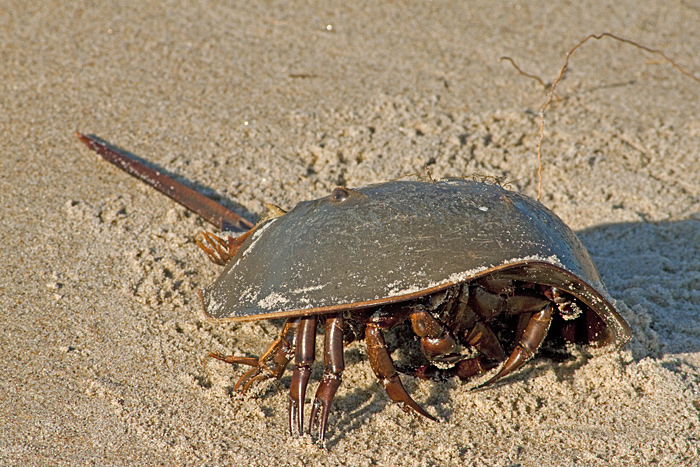
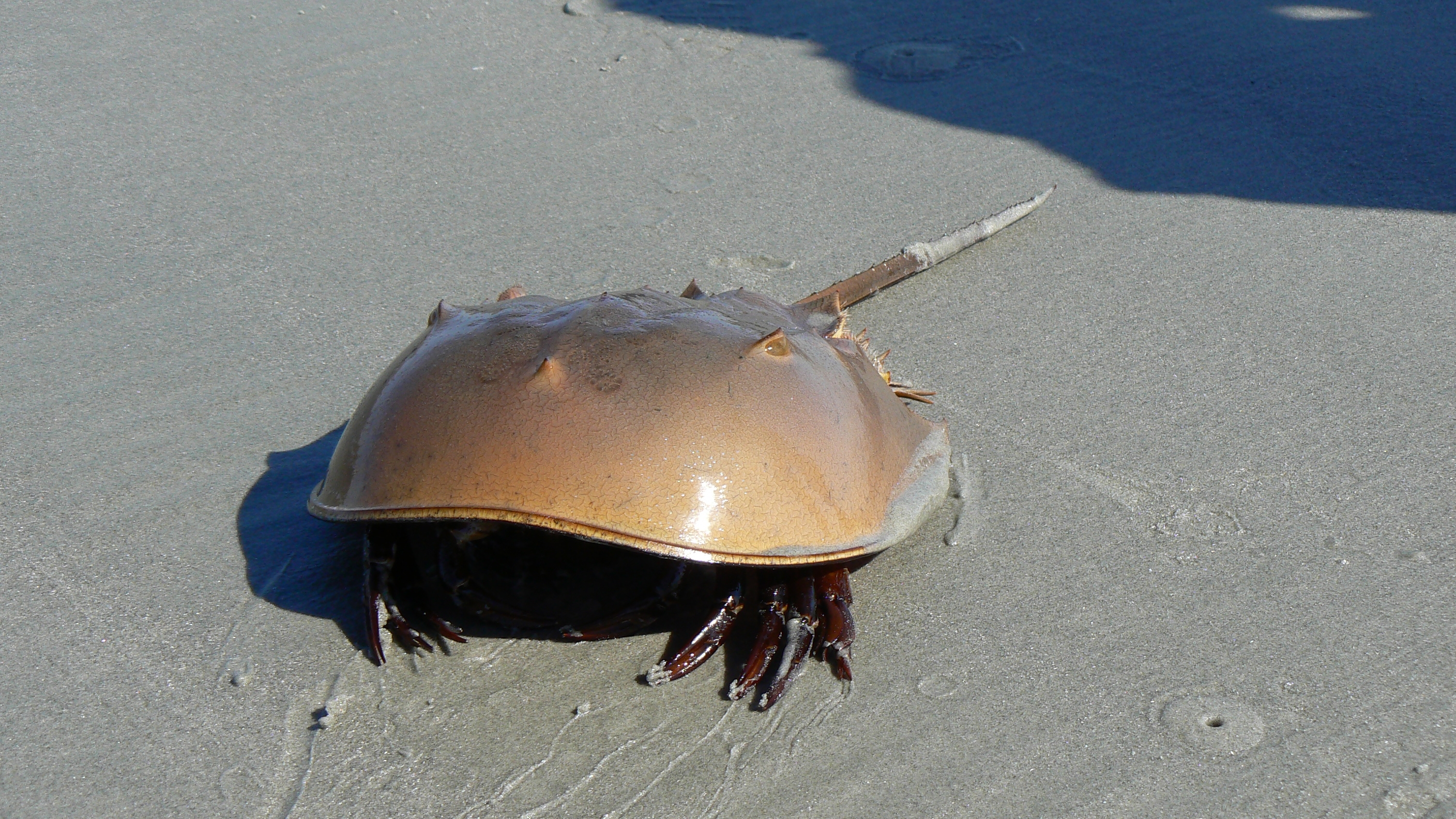

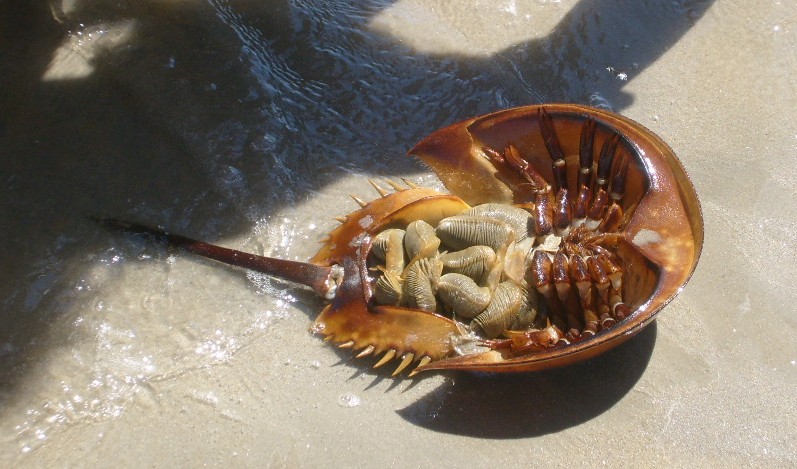
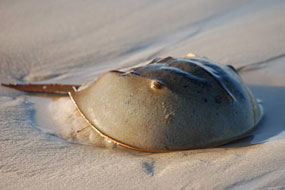
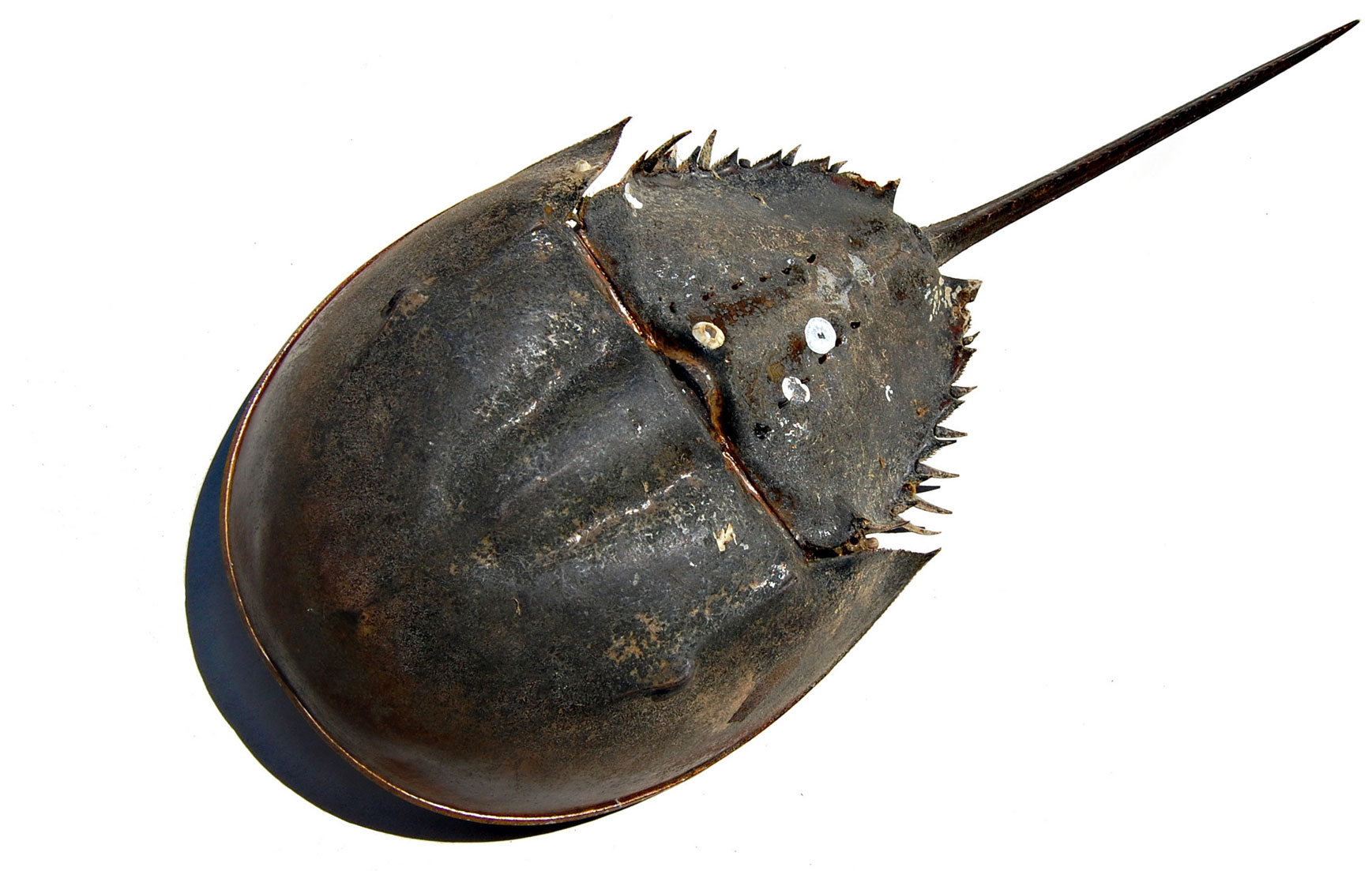

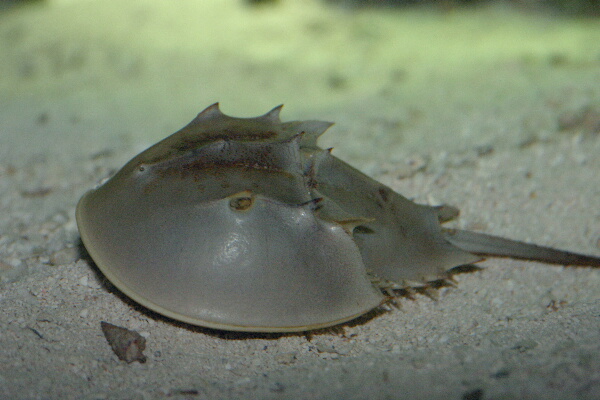
 Animalia Life
Animalia Life